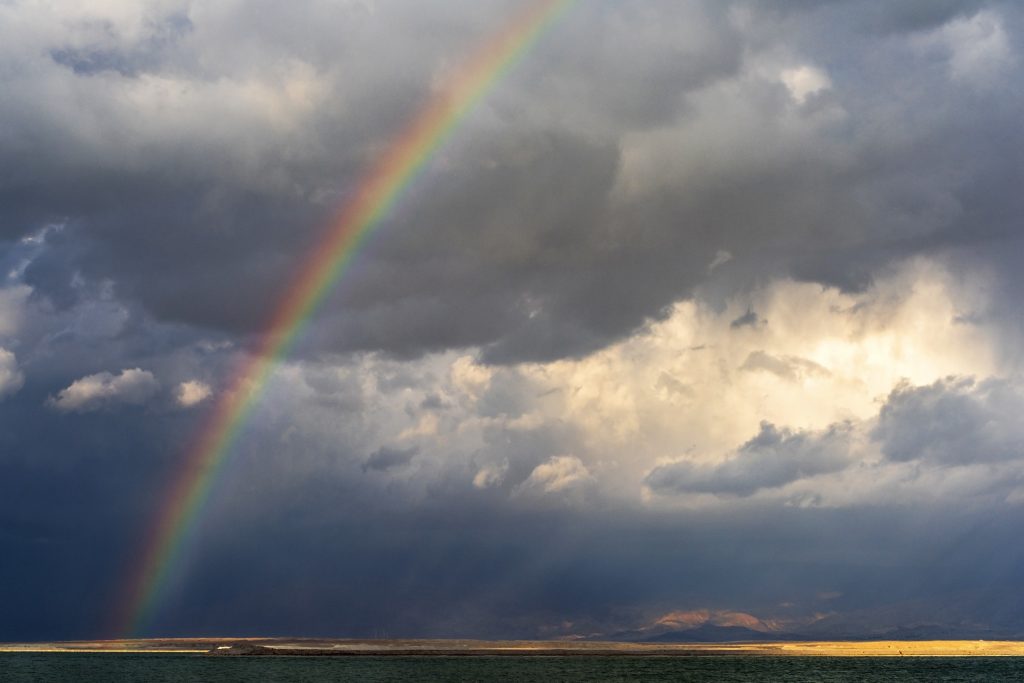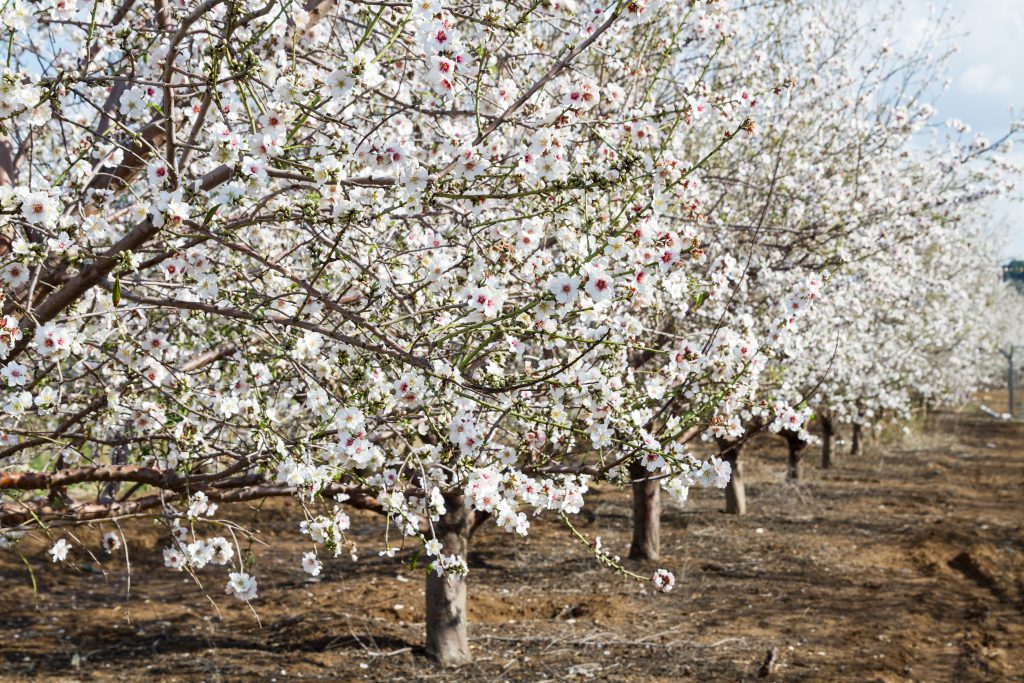The Biblical Jewish New Years
In Israel, you will not hear of too many households celebrating a typical, western New Year’s Eve in January. In the west, we love our fireworks and to see the ball drop. But the Jewish people, along with their Arab neighbors, enter new beginnings on a few occasions – at different times in the year.
Many of these special occasions are also referred to as a “New Year”. But you may wonder, which “new years” are Biblical?
Download your FREE Biblical Holiday PDF:
The Biblical New Year is coming up and you should know about it
This is a great place to start, because the new biblical year is coming up! You might be thinking, what – now? Didn’t we just celebrate it? And we are still several months away from the traditional Jewish New Year (Rosh Hashanah)… aren’t we?
That’s true. But there is yet another “new year” that is in fact more biblical than the other two!
On the first day of Aviv (or Nisan), God said to Moses: “This month shall be unto you the beginning of months: it shall be the first month of the year to you” (Exodus 12:2).
Many Calendars
Have you ever thought how odd it is that we can have multiple ‘years’ running simultaneously in most parts of the world? If you’re wondering what I mean, let me give you an example.
You can walk into a high school in May, and although we would be barely approaching the middle of the calendar year, everyone around you would be getting excited about the year ending!
Of course the year that is ending for the students and the teachers is the academic year. So, while the so-called “calendar year” begins on January 1, the school year generally begins some time in late August or early September. (That is, if you live in the northern hemisphere.)
What I love about this de-synchrony, is that it is kind of, well – Biblical. It’s not Biblical in the sense that the Bible tells us to start our school at the end of summer. Or to start counting the months in winter. But it’s Biblical, because there is meaning in counting the days for various reasons.
More than one biblical new year
Even the Bible speaks of more than one “New Year.” The Jewish people recognize and celebrate several of them.
We’ll mention three of the new beginnings on the Jewish calendar and why they are important. Let’s start with the Biblical New year…

Biblical year starting on Aviv/Nisan 1
Nisan 1 marked the new year for the purpose of counting the months on the Jewish calendar. Scripture lists two names for the first month of the Jewish calendar year: Aviv and Nisan. Most of the Jewish culture today refers to it as Nisan. On the Gregorian calendar, it begins usually in March.
In the month of Nisan begins also the cycle of the seven major feasts in the Bible. Three of the seven festivals fall in Nisan.
Passover (one of the three pilgrimage festivals) begins on the 14th day of Nisan. The festival of Unleavened Bread follows on the very next day – the 15th. Finally, First fruits is usually just a few days after Unleavened Bread.
Leviticus 23:5 “In the first month, on the fourteenth day of the month at twilight, is the LORD’s Passover.”

Traditional Jewish New Year on Tishri 1 (Rosh Hashanah)
In today’s Israel, Tishri 1 marks the beginning of the civil year. This day is commonly referred to as Rosh Hashanah, which means “head of the year.” In the Bible however, it is called Yom Teruah, which means “day of trumpets” – it is the fifth of the seven major holidays.
Leviticus 23:24 says: Speak to the people of Israel, saying, “In the seventh month, on the first day of the month, you shall observe a day of solemn rest, a memorial proclaimed with blast of trumpets, a holy convocation.”
The rabbinic culture at large recognizes Tishri 1 as the day when God created Adam and Eve. It usually falls in the western month of September.
This is the “New Year’s Day” that is celebrated in Israel today, as a time to bless others and wish each other a sweet (like honey) new year.
New Year of Trees on Shevat 15 (Tu B’Shvat)
Shevat 15 marks the new year for the trees in Israel. It is a unique way in which Israel celebrates God’s creation and His provision through nature.
It is not a Scripturally defined new year, but it celebrates when first fruits can be eaten. Tu B’Shvat often starts during the month of January or February on the Gregorian calendar.
We can learn a lot from how God has orchestrated time. The Psalmist asked God, “teach us to number our days, that we may gain a heart of wisdom” (Psalm 90:12).
Biblical Year Count
There is one fundamental paradigm shift between the way the western world looks at time in contrast with how the Bible and the Jewish culture consider it. It is that the western world sees and measures time in a linear way. It goes from point A to point B.
Meanwhile, the biblical and Jewish interpretation sees time as cyclical.
Genesis 1:14 tells us, “And God said, ‘Let there be lights in the expanse of the heavens to separate the day from the night. And let them be for signs and for seasons, and for days and years.’” And in Ecclesiastes 3:1 we read, “For everything there is a season, and a time for every matter under heaven…”
Life and death go in a cycle. Planting and harvesting are cyclical. The rain, the sun, the moon, the tides, our bodies, our sleep, our work, and even our struggles – they are all cyclical.
Even the problems that mankind faces both externally in the flesh and internally, within the soul and the spirit, are cyclical and repeat in every generation.

Recurring patterns
One of the reasons why I believe that God created time to be cyclical is so that every generation, every nation, every family, and every person can continually come to the conclusion that the world is revolving in a pattern that points to two things.
Firstly, of all the patterns that are good in this world, we see that God Himself is good and desires to bless His creation with His goodness.
And secondly, of all the patterns of sin and destruction, selfishness and violence that manifests in every generation and in every individual life, we see that mankind is in need of a savior – a messiah.
According to the Jewish tradition, we are in the year of 5780, we have just recently celebrated Tu B’shvat (the “New Year of the Trees”), and we are about to reset the cycle of the festivals with Passover.
But just under 2,000 years ago, after the trees had bloomed, and a Passover eve was setting in – God’s plan to bless His creation with His goodness culminated in Yeshua (Jesus) giving up His life on a cross.
The eternity’s cycles were eclipsed the moment when mankind’s struggle to overcome sin met God’s goodness and redemptive plan to restore all things.
Wherever you are in your walk in life, may you know that this Yeshua of Nazareth is the only one who can break the cycle of sin. He will lead you into the cycle of life in abundance. We remember this as we celebrate the Biblical New Year.

A Simple Guide Through the Biblical Holidays: Free PDF Download
You may know them as the “Jewish holidays,” but did you know the Bible calls them “Feasts of the LORD”?
We’ve put this guide together for you so that you have all you need to know about these holidays that God calls His own.
Articles Related to the Jewish New Year
Estimated reading time: 7 minutes

